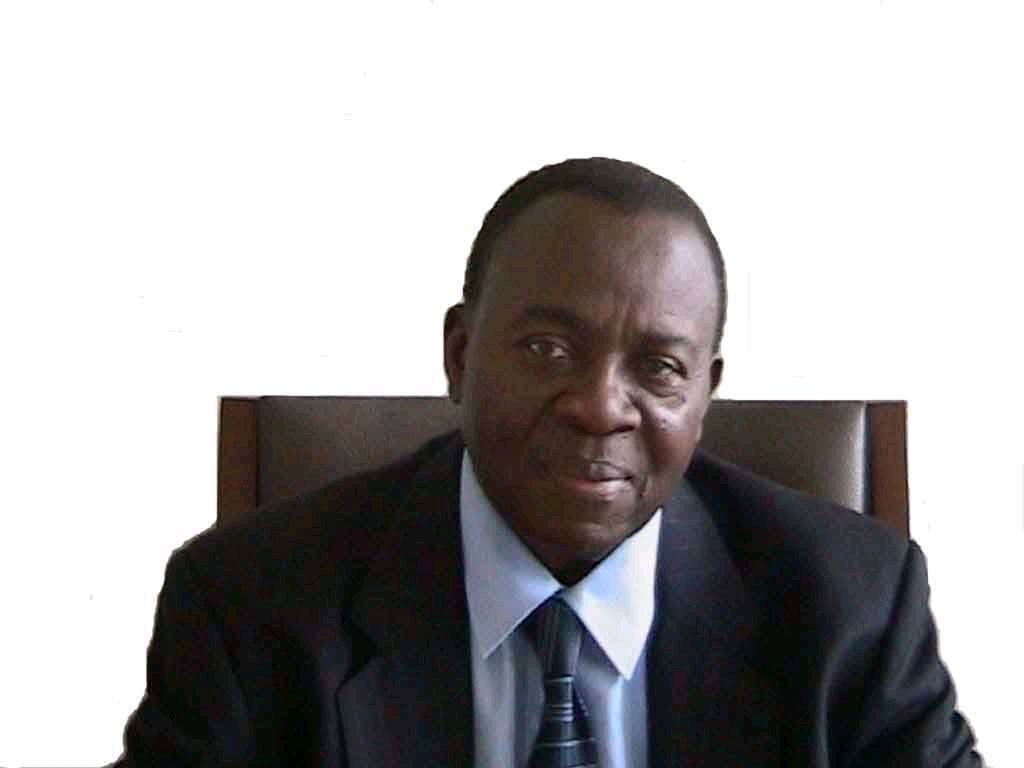Mr Christopher Sembuya, the co-founder of Sembule Steel Mills, once one of the leading industrial conglomerates in Uganda, that threatened to become the Samsung of Africa except for lack of imagination on our economic planners, as I will explain, led a life that was heroic but also tragic. It was heroic that coming from humble beginnings he at midlife helped found a family business that manufactured sophisticated electronic household goods which became a source of pride to Ugandans. Tragic that when the business run through financial difficulty due to bad debts it was ignored by the government which it had once supported to come to power in spite of passionate appeals.
When Sembuya passed away this week at 87, he would not be feted as pioneering industrial giant in the manner of some. In fact, at some point, after losing his business and most of his property, he had bitterly cried out to a deaf government to honor him too as a national hero, with just a heroes medal. In death Sembuya except for the Buganda Kingdom government, represented by once his former employee, ex Kattikiro Mulwanya Ssemwogerere, some others did not show up to laud him as a great pioneer of African business, as should be. And yet there is so much that he gifted the nation of Uganda and did to the pride of Africans.
Sembuya was born into a well renowned entrepreneurial family from Bukunju, in Kyagwe province of Buganda. His father, Yafesi Magula, was a successful cocoa farmer. After attending St Leo’s secondary school, Kyegobe in Toro, he started a government career that saw him rise through the ranks to the position of Assistant District Commissioner in the Ministry of Local government for Moyo and later Karamoja Districts. At some point he moved to the Ministry of Finance, where he served as Senior Finance Officer and then Principal Finance officer.
In 1972 this career civil servant took the unusual decision to leave a stable government job and plunge into the uncertain waters of an entrepreneur career. “I owe everything to my father the late Yafesi Mugula,” he shared in one interview with New Vision, the government owned paper. “He told me as long as I worked in government I would never get richer, not even reach him. That haunted me. I was Undersecretary then at Ministry of Finance and they were preparing me to become Permanent Secretary. I resigned from the government job.”
Sembuya had a younger brother, Henry Buwule, who was already in business. Buwule had set up a shop in Ndebba, in 1964, close to Katwe, where most of African owned business were based at a time when businesses were dominated by Asians. The shop dealt in hardware products. After joining his brother they decided to go into nail production. Borrowing from their two names they started Sembule industries which as it expanded in 1974 became Sembule Steel Mills.
The company grew relatively fast. “In a few years,” reads a message from the company website, “ it had grown into one of the largest wire-nail manufacturing companies in Uganda. Throughout the 1970s and 1980s the company continued to grow and increase its product lines from wire nails to welding electrodes…” The company would go on to produce Roofing sheets, Welded Wire Mesh, Round Iron Bars, Galvanized Barbed Wire, Steel Pipes and multiple hardware products. Along the way also employed thousands. When I left university in 1987 a number of my colleagues, like Godwin Kihuguru (RIP) joined Sembule Mills and I must say I felt a bit envious.
Diversification is a business strategy advised on the simple premise that it is better to have your eggs spread out than have them all lay all in one basket. Companies that are thriving normally use their healthy cash flows to diversify into new fast growing markets, so as to lessen the risks of depending on a limited and perhaps diminishing market. Given her business growth it was only natural for Sembule Mills to enter into new growth lines of business. “In 1985, a small deposit-taking private company was started,” recalled the Observer newspaper. “In 1991, it was granted a banking license as Sembule Investment Bank, and a fully-fledged commercial bank in 1996. A year later, after securing new investors for the bank, it was renamed Allied Bank International, which later became today’s Bank of Africa Uganda. At the end of the 1990s, Sembuya started Pan World Insurance Company.” This later became Lions Assurance, one of the leading insurance company in Uganda today.
Sembule Mills did not stop with diversifying in the financial markets but using her manufacturing knowledge now veered into the world of electronics. By the mid-1980s, the group had diversified into electronics, including the production of street-lighting systems and the first Ugandan-made transistor radio, the Sembule radio, which came in brands like “Makula”. The company drawing on local engineers and workmanship went into assembling TV sets, bulbs, desk telephones, traffic lights and even computers. Sembule revolutionized the Ugandan airwave by introducing FM technology. In 1992, she established the first private TV channel, Cable International Television. Who is that who was not aware of all these developments then and couldn’t be proud!
Unfortunately as the company expanded tragedy occurred when Henry Buwule passed on in the mid 1980s This loss would affect the company as it had been up until then a successful and productive partnership. The woes of Sembule cannot be traced to mismanagement as their history of rapid expansion shows expertise but started when they took on expensive financing for some of their diversified projects. After securing a loan from several financial institutions the company failed to service it adequately and the lenders sought to auction her property. Faced with the threat of losing his business empire, now at an advanced age in his late seventies, Sembuya, who passionately believed in the capacity of Africans to run successful industries as he had already proved himself , went out of the way to directly appeal to government of Uganda to bail him out. “I appeal to the government of Uganda to help us with this situation,” he cried out in an interview that can be found on Yutube. “The company we have built is one of the largest managed by Africans in East Africa.”
In the history of industrialization in Japan and South East Asia we know that their iconic industries like Samsung and Toyota which are now major global household brands grew not solely on the abilities of their founders but also due to the cooperative efforts of their nationalist government. It is well documented that family founded firms like Samsumg, Hyundai, LG, collectively known as chaebols, were backed by their government. For example, Samsung was founded in 1938 by Lee Byung Chill as a grocery store but heavily relied on government protectionist policies. Samsung would move into finance and other major industries, the most recent being cell phone and pharmaceuticals, which I have visited. Today, we know in China, too, companies like the family founded Huawei, and all these “CCCC” construction firms, have prospered because of government tacit support.
Unfortunately, this truth was not shared by Uganda’s leadership, and Sembule Mills, an indigenous founded company that gave us radio and color TV sets bearing our African names was left to die an ignominious death. The man who once helped fund the war that brought the present government to power now resorted to write over 200 letters to President Meseveni appealing for salvage. While the President who once used to cite Sembule as a case study of his economic recovery miracle can be excused, the same cannot be said of planners at the Ministry of Finance where once Sembuya worked. Had Sembule been rescued there is all the possibility that she besides producing computers she would now have entered the lucrative cell phone manufacturing sector and car manufacturing, which Uganda is lately attempting at Kira motors.
Bailing out stressed but promising companies is not unique. In 1980 one of the top three car manufacturers in the US, Chrysler Motors, was rescued from bankruptcy when the government bailed it out with nearly $1.5 billion dollars in loan guarantees. In 2008 the US government again injected over $700 billion in key financial institutions like JP Morgan, Goldman Sachs, Citgroup stressed by the financial meltdown. Had the US government merely stood on the side their collapse would have resulted into a catastrophic and systematic collapse of the US financial industry, leading to millions of jobs lost.
In fact, there are many other business in Uganda that have benefited from government bailout, as well. The revival of the Madvhani Group in the 1980s was not solely based on the abilities of the returning family members but because of a financial capitalization from World Bank and other financial institutions, backed by Government of Uganda. “The government has helped many people including Sudhir (Ruparelia) and Hassan (Basajjabalaba), I don’t know why they have not helped Sembule,” once moaned one of Sembuya’s son in a press interview. For while it is true that the collapse of Sembule Mills was not to result into a “too big too fail” economic collapse of the Ugandan economy, when one considers that hundreds of Ugandans today board planes every day to go out to scavenge for jobs in the Middle East, then how could we let such a proven industrial conglomerate collapse! Someone needs to answer!
In his business career Sembuya helped to mentor many leading business personalities like Mr Emmanuel Katongole of Quality Chemicals, who once worked under him. One of his mentees, Engineer Fred Mubiru, in a Facebook post, soon after his demise, recalled how after Sembule Mills had executed successfully a street lighting contract which he had overseen as KCC infrastructure engineer, he urged him to quit government and enter the private sector, which he eventually did after a lot of pushing from him. “That decision was one of the game changers of my life…I gained freedom and control of my life.”
Sembuya was a passionate believer in African run business and he wrote a small book, “The other side of Amin Dada!” In it he noted Amin emancipated and supported African businessmen like him start industries. It “pained” him ( his words) that part of his business empire was sold to Asians, which is the very Economic war African industrialists had embraced. “What the Asians and Europeans can do, Ugandan investors can do,” he wrote. “Ugandans should therefore be given first priority and probably full support thereafter. Government should protect the local firms from the big ones that come in with plenty of foreign money and end swallowing home grown initiative. This way the country will see many of its nationals succeeding.”
Early last year Christopher Sembuya was pictured being recognized by Bank of Africa, which he helped found. He looked fail. On Tuesday, January 11, while sitting on the sofa at his Windsor Crescent home in Kololo, his wife Ritah shared, he collapsed. He was rushed to nearby Kampala Hospital in Kololo, but unfortunately, he died at around midday. May he RIP!


Great piece of writing.
May his soul Rip
Great piece about the Sembule business empire and how an opportunity was lost to propel the nation forward.